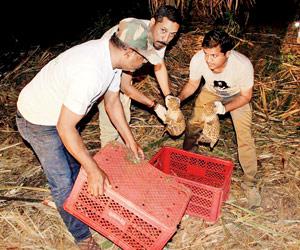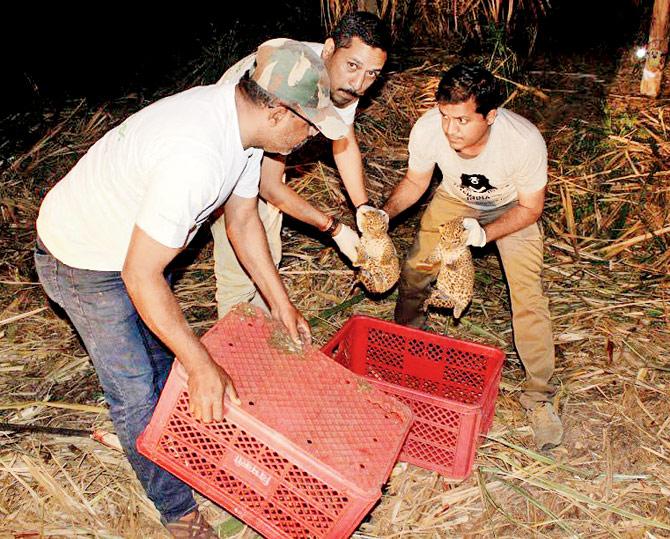The Pune divisional forest department and the NGO Wildlife SOS have been working at the Manikdoh Leopard Rescue Centre for the conservation of the animals


Members of Wildlife SOS and staff of Manikdoh Leopard Rescue Centre prepare for cubs to be reunited with their mother
ADVERTISEMENT
The past year has been good for leopard conservation in Maharashtra. The Pune divisional forest department and the NGO Wildlife SOS, have in the span of a year reunited 22 leopard cubs with their mothers. The Manikdoh Leopard Rescue Centre (MLRC) in Junnar, around 78 kilometres from Pune, is one of India's largest nursing and care centres for leopards, where the Forest Department of Maharashtra has been working with Wildlife SOS for the conservation of leopards since 2007.
Around 35 rescued leopards, of which 25 are female, are kept at MLRC. Some of them are old, and some are injured. Most of them are from Borivali, Nashik, Pune, Shirur, Junnar and other areas. The leopards have a GPS chip inserted in their tails so that the department can later track them.

There are 35 enclosures at the MLRC
Awareness also
On Saturday, Vivek Khandekar, Chief Conservator of Forests, inaugurated five enclosures built for the leopards at MLRC on the occasion of World Wildlife Day.
Khandekar said, "At our centre we not only rescue but treat injured leopards, and interact with local residents to create awareness about safeguarding themselves from the animals, and helping to reunite cubs and female leopards. Many rescues take place during the time of sugarcane harvesting, as leopards often hide in these farms. In the past we have seen that farmers panic after seeing the cubs. We have also seen the strong bond between mothers and their cubs, when once a female leopard entered our centre and tried to free her cub from the cage."
Rescuing cubs
Wildlife SOS' in-house veterinarian, Dr Ajay Deshmukh said, "Mother leopards become very aggressive after the cubs go missing and the cubs may even die. After treating the cub we keep it in the same area where it was rescued. It may usually take a day or even a week for the mother leopard to return and take the cub with her."
Wildlife SOS officials say that because of the shrinking forest habitat, the big cats have moved into the sugarcane fields. Female leopards also give birth in them as the height of the plants provides the most suitable cover for a mother to conceal and protect her cubs from predators.
 Subscribe today by clicking the link and stay updated with the latest news!" Click here!
Subscribe today by clicking the link and stay updated with the latest news!" Click here!






